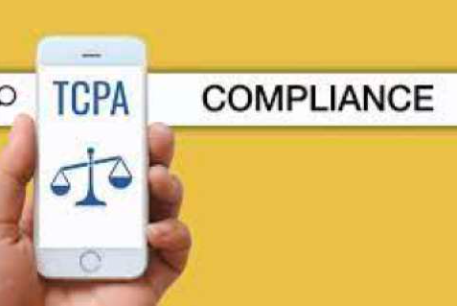Introduction
The world of telecommunications is continually evolving, presenting both opportunities and challenges for businesses engaging in global communication. At the heart of this landscape is the Telephone Consumer Protection Act (TCPA), a pivotal regulatory framework in the United States that shapes the dynamics of telephonic and electronic communications. In this comprehensive exploration, we will delve into the global implications of TCPA and examine how businesses navigate the complex world of telecommunications compliance on an international scale.
The Reach of TCPA Beyond Borders
Overview of TCPA
Enacted in 1991, the TCPA was designed to protect U.S. consumers from unwanted telemarketing calls, prerecorded voice messages, and unsolicited fax communications. While its jurisdiction is primarily domestic, the TCPA has influenced the broader conversation on privacy and consent in the global telecommunications arena.
Extraterritorial Impact
The principles embedded in the TCPA, such as obtaining consent and providing opt-out mechanisms, have influenced global discussions on consumer privacy. As other countries develop and refine their own telecommunications regulations, they often draw insights from the TCPA model to address the challenges posed by unsolicited communications.
International Perspectives on Unsolicited Communications
European Union (EU)
The General Data Protection Regulation (GDPR) is a cornerstone of privacy legislation in the European Union. While distinct from the TCPA, the GDPR shares common themes, emphasizing the importance of consent, data protection, and individual rights. Both frameworks reflect a global trend toward empowering individuals with control over their personal information.
Canada
Canada’s Anti-Spam Legislation (CASL) addresses electronic communications, including commercial emails and text messages. CASL, like the TCPA, requires consent for certain types of communications and includes provisions for opt-out mechanisms. Businesses operating in Canada and the U.S. must navigate the nuanced requirements of both regulatory frameworks.
Asia-Pacific Region
Countries in the Asia-Pacific region, such as Australia and Japan, have also implemented regulations to combat unsolicited communications. These regulations often incorporate elements of consent and provide consumers with tools to manage their communication preferences.
Navigating the Complexities of Global Compliance
Varying Regulatory Frameworks
One of the challenges businesses face in the global telecommunications landscape is the diversity of regulatory frameworks. Each country may have its own set of rules and requirements, making it essential for businesses to adapt their communication practices based on the jurisdictions in which they operate.
Consent and Cultural Sensitivity
Obtaining consent is a universal theme in many telecommunications regulations worldwide, but cultural nuances must be considered. What constitutes valid consent can vary across cultures, and businesses need to be culturally sensitive to navigate these differences successfully.
Data Localization and Storage
Some countries require data to be stored within their borders to comply with local data protection laws. This adds a layer of complexity for businesses engaged in cross-border communications, as they must ensure that data storage practices align with each jurisdiction’s requirements.
The Impact of Technological Advances
Evolving Communication Technologies
Advancements in communication technologies, such as Voice over Internet Protocol (VoIP) and messaging apps, have transformed the way businesses engage with consumers globally. These innovations challenge traditional regulatory frameworks and require regulators to adapt to the changing landscape.
Artificial Intelligence and Automation
The use of artificial intelligence (AI) and automation in communications introduces new considerations for regulatory compliance. Businesses must ensure that automated systems adhere to consent requirements and provide mechanisms for individuals to opt out of automated communications.
Challenges and Opportunities for Businesses
Compliance Burden
The multiplicity of regulations presents a compliance burden for businesses engaged in global communications. Navigating varying requirements, staying informed about regulatory changes, and implementing region-specific compliance measures can be resource-intensive.
Building Trust
Compliance with telecommunications regulations is not only a legal necessity but also a means of building trust with consumers. Businesses that prioritize privacy, obtain valid consent, and respect individual communication preferences are more likely to foster positive relationships with their audience.
Technology as a Facilitator
While technology poses challenges, it also serves as a facilitator for businesses seeking to comply with global regulations. Robust Customer Relationship Management (CRM) systems, consent management platforms, and communication tools can streamline compliance efforts and enhance transparency.
Future Trends in Global Telecommunications Compliance
Harmonization Effort
There is a growing recognition of the need for harmonization of telecommunications regulations on a global scale. Efforts to align frameworks and promote consistency across jurisdictions are gaining traction, driven by the interconnected nature of global communication.
Strengthening Consumer Rights
The trend toward strengthening consumer rights and privacy is likely to continue. Regulatory frameworks worldwide are expected to evolve to provide individuals with greater control over their personal information and communication preferences.
Industry Collaboration
Businesses and industry stakeholders are increasingly collaborating to address global telecommunications challenges. Industry associations, forums, and collaborative initiatives play a crucial role in shaping best practices, sharing insights, and advocating for regulatory approaches that balance business needs with consumer protection.
Conclusion
In conclusion, the TCPA, while a domestic regulation, has far-reaching implications in the global telecommunications landscape. Businesses operating internationally must navigate a complex web of regulations, adapt to cultural nuances, and leverage technology to ensure compliance. As the world becomes more interconnected, the evolution of regulatory frameworks and industry collaborations will play a pivotal role in shaping the future of telecommunications compliance on a global scale. Navigating this dynamic landscape requires a proactive approach, a commitment to consumer privacy, and a keen awareness of the evolving regulatory environment.





